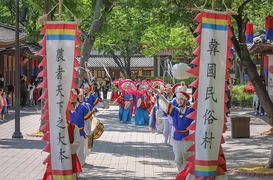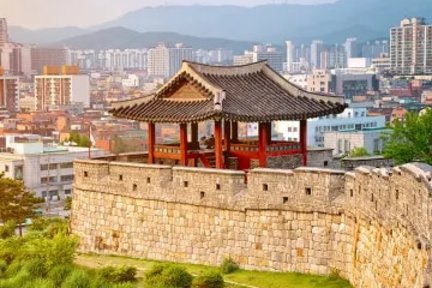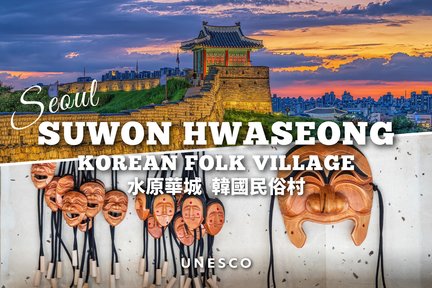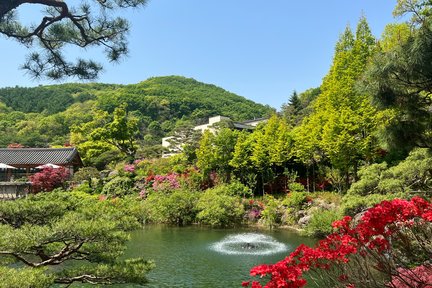Korean Folk Village

The best of Korean Folk Village
Bucket-list experiences
Make it a getaway
More to explore
Why people love Korean Folk Village
Nearby places to go
FAQs about Korean Folk Village
When is the best time to visit the Korean Folk Village in Gyeonggi-do?
How can I get to the Korean Folk Village from Seoul?
What should I wear when visiting the Korean Folk Village?
Are there any special events or festivals at the Korean Folk Village?
What are the admission fees for the Korean Folk Village?
Is there anything I should be aware of before visiting the Korean Folk Village?
What transportation options are available to reach the Korean Folk Village?
What to know before visiting Korean Folk Village
Remarkable Landmarks and Must-Visit Sights
Traditional House Replicas
Explore over 260 traditional houses from the late Joseon Dynasty, representing different social classes and regions, providing a unique insight into Korean architecture and lifestyle.
Cultural Performances
Witness captivating performances such as Nong-ak play, tightrope play, horseback martial art play, and traditional weddings, offering a glimpse into the vibrant cultural heritage of Korea.
Living Culture Experiences
Engage in various cultural experiences like ferry rides, horseback riding, natural dyeing, and traditional life experiences, allowing visitors to immerse themselves in the traditions of the Joseon period.
Local Cuisine
Indulge in popular local dishes at the traditional street market, offering a variety of Korean delicacies like sweet ice-cream, Winibini candy, Railroad hotdog, and Imsil cheese pizza.
Historical Significance
Experience the historical significance of the Korean Folk Village, the first open-air museum in South Korea, dedicated to preserving traditional Korean culture and customs amidst rapid westernization and industrialization.
Traditional Folk Games
Engage in traditional folk games like yut and stick-throwing, offering a glimpse into Korean recreational activities and cultural pastimes.
Workshop Street
Discover the Workshop Street where visitors can participate in pottery, dye-making, and crafts, immersing themselves in hands-on traditional experiences.
Showroom for Farming Tools
Visit the Showroom for Farming Tools to see historical agricultural implements like the ojum changgun and salpo, showcasing the ingenuity of ancient Korean farming practices.
Cultural and Historical Significance
The Korean Folk Village preserves the cultural and historical essence of the Joseon Dynasty, offering insights into traditional practices and architecture.
Scenic Landscapes
Set against the backdrop of scenic mountains and a river, the village provides a serene and beautiful environment for visitors to explore.
Traditional Cuisine
Indulge in popular local dishes and dining experiences, savoring the unique flavors of Korean cuisine within the village.



